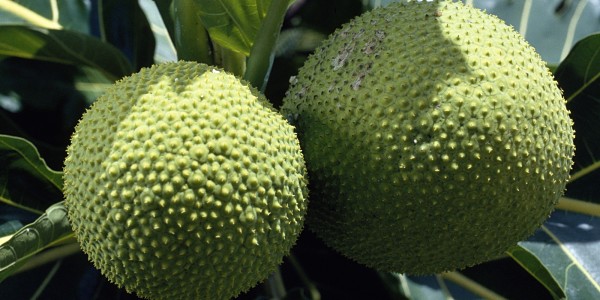6 Reasons Breadfruit Can Solve World Hunger

What is breadfruit? Although it sounds fictitious, it is actually a real food with the potential to contribute to the eradication of world hunger.
Breadfruit is shaped like a football and has a prickly texture. The fruit grows on trees and is highly nutritious. It is not well known because many people find it bland and tasteless.
However, there are 6 reasons why food critics should stop turning up their noses at this fruit and they all pertain to helping starving people.
- Breadfruit is native to the Pacific Islands and grows best in sunny and humid climates. About 80 percent of the world’s hungry live in tropical and subtropical regions. Because these regions are best for these trees, the fruit has the potential to feed thousands of hungry people.
- Breadfruit trees grow easily and begin to bear fruit within three to five years. They are not high maintenance and continue to produce fruit for decades. On average, larger trees can produce between 400-600 fruits while smaller trees can produce approximately 100 fruits.
- Breadfruit is nutritious. It is high in fiber, carbohydrates, calcium, copper, iron, magnesium, potassium, thiamine, and niacin.
- Breadfruit can be prepared in a variety of ways including fried, frozen, fermented, pickled, boiled, baked, and roasted. It can also be ground into flour.
- Currently, there are pilot projects working to distribute the fruit to places in need such as Honduras and the Caribbean. The Breadfruit Institute in Hawaii is a member of the Alliance to End Hunger. With their hard work and the work of other organizations such as Trees That Feed Foundation, breadfruit has fed people in Jamaica, Kenya, and Haiti.
- There are many fans advocating for the fruit. Olelo pa’a Faith Ogawa, a private chef says, “I feel it’s the food of the future. If I were to speak to the breadfruit spirit, it would tell me: ‘Grow me! Eat me! It can feed villages!’”
– Kelsey Parrotte
Sources: Business Insider, National Tropical Botanical Garden, Wall Street Journal, Huffington Post
